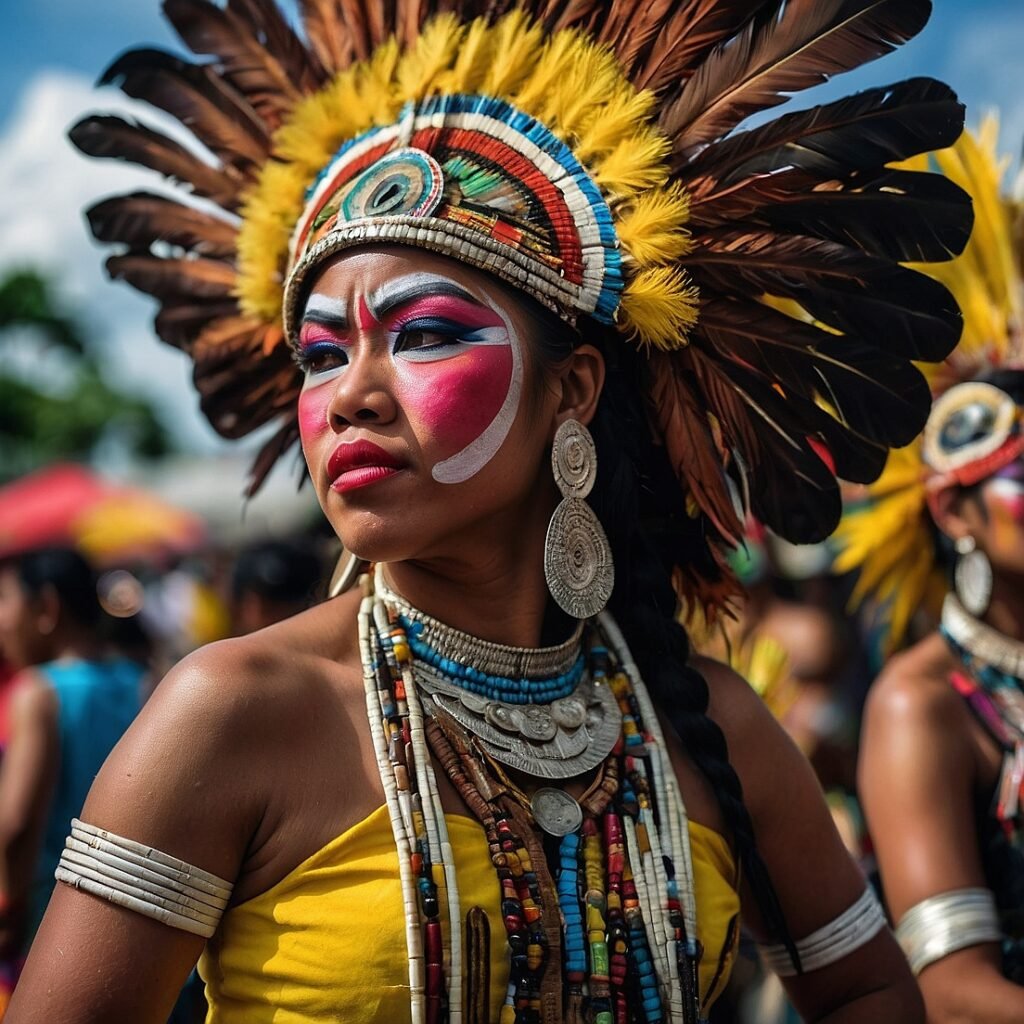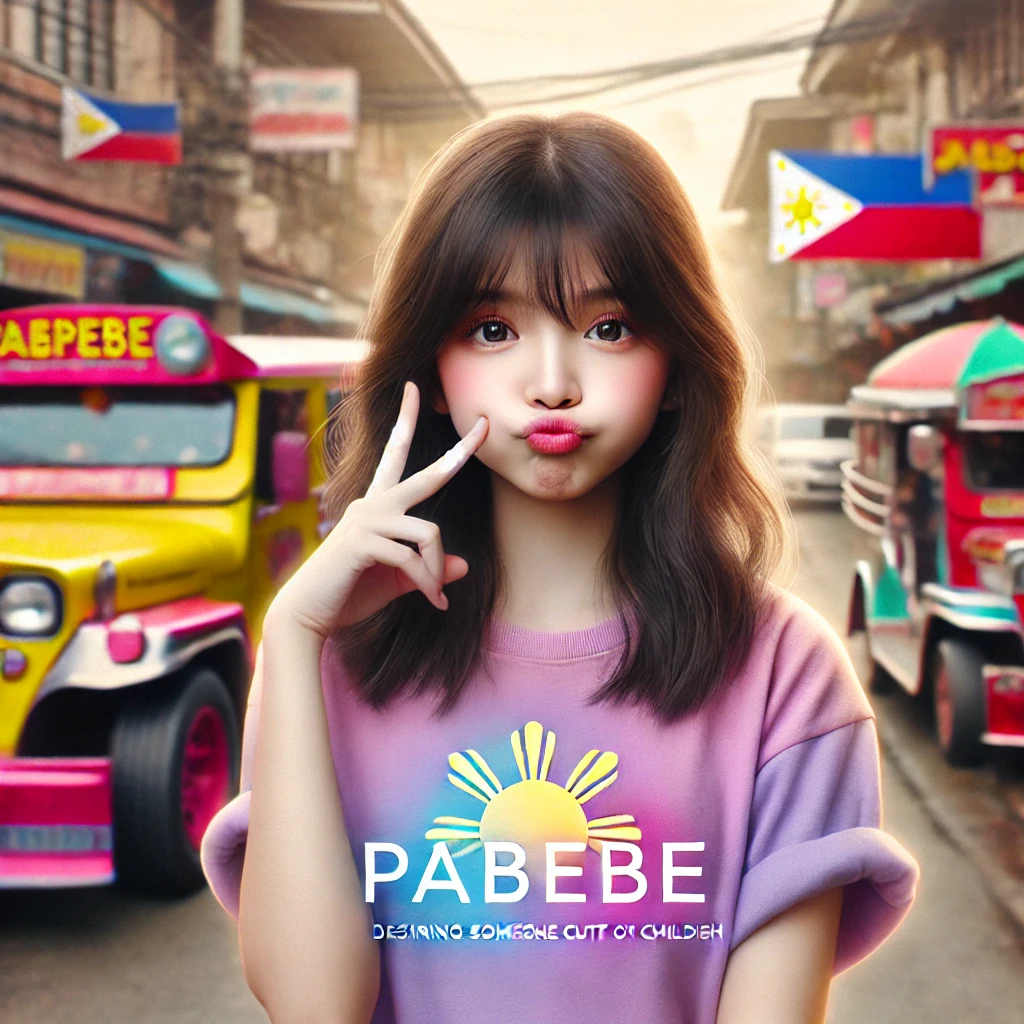Welcome, fellow culture enthusiasts and festival lovers! Today, we’re diving into the colorful world of the Dinagyang Festival, one of the Philippines’ most vibrant and beloved celebrations. Held annually in Iloilo City, this festival is a feast for the senses that you absolutely must experience at least once in your lifetime. Through this photo essay, I’ll take you on a visual journey through the sights, sounds, and spirit of Dinagyang. We’ll explore its rich history, witness its breathtaking performances, and soak in the infectious energy that makes this festival truly unique. So, grab a cup of coffee (or better yet, a glass of local Ilonggo rice wine!), sit back, and let’s embark on this exciting adventure together!
The Origins: A Tale of Faith and Cultural Fusion
From Humble Beginnings to National Treasure
Every great story has a fascinating origin, and the Dinagyang Festival is no exception. This celebration’s roots can be traced back to 1967 when a replica of the Santo Niño (Holy Child Jesus) was brought to Iloilo from Cebu. The warm welcome given to this religious icon sparked a tradition that would evolve into the grand festival we know today. It’s amazing to think that what started as a simple religious observance has grown into a nationally recognized cultural extravaganza!
The name “Dinagyang” itself is a local Ilonggo word that means “merrymaking” or “revelry.” And let me tell you, it’s a perfect description of the festival’s atmosphere! Over the years, Dinagyang has beautifully blended Catholic traditions with indigenous cultural elements, creating a unique celebration that truly represents the spirit of Iloilo and the Philippines as a whole. This fusion is what makes Dinagyang stand out among the country’s many festivals, earning it recognition and admiration both nationally and internationally.
As we delve deeper into the festival’s history, it’s worth noting how it has grown and evolved. What began as a small religious procession has transformed into a multi-day event featuring elaborate street dances, music competitions, food festivals, and even beauty pageants. It’s a testament to the creativity and passion of the Ilonggo people, who have nurtured this celebration into a world-class event that draws visitors from all corners of the globe.
The Main Event: A Spectacular Display of Dance and Music
Tribes in Motion: The Heart-Pounding Ati-Ati Competition
Now, let’s get to the heart of Dinagyang – the incredible Ati-Ati competition! This is where the festival truly comes alive, with competing “tribes” showcasing their jaw-dropping dance performances. Picture this: streets filled with dancers in stunning, colorful costumes, their bodies painted in intricate designs, moving in perfect synchronization to the thunderous beat of drums. It’s a sight that will leave you absolutely spellbound!
Each tribe tells a story through their performance, often drawing inspiration from local legends, historical events, or religious themes. The level of creativity and artistry on display is simply mind-blowing. From the meticulously crafted headdresses to the perfectly choreographed routines, every aspect of these performances is a labor of love and dedication. As you watch, you can’t help but feel the passion and pride radiating from each dancer.
What makes the Ati-Ati competition even more special is its connection to the indigenous Ati people of Panay Island. The performances pay homage to their culture and traditions, ensuring that their heritage continues to be celebrated and remembered. It’s a beautiful example of how festivals like Dinagyang can serve as a bridge between the past and present, keeping ancient traditions alive in a modern context.
The competition itself is fierce, with tribes spending months preparing for their moment in the spotlight. Judges evaluate the performances based on criteria such as choreography, costume design, and overall impact. Winning the Ati-Ati competition is a huge honor, bringing prestige not only to the tribe but to their entire community. It’s no wonder that the energy and excitement during these performances are absolutely electric!
A Feast for the Senses: Colors, Sounds, and Flavors of Dinagyang
Visual Spectacle: A Photographer’s Paradise
If you’re a photography enthusiast like me, Dinagyang is an absolute dream come true! The festival is a riot of colors, with every shade under the sun represented in the elaborate costumes and decorations. From the moment you step into the festival grounds, you’re surrounded by a kaleidoscope of hues that seem to dance before your eyes.
The costumes worn by the Ati-Ati performers are particularly stunning. Adorned with feathers, beads, and intricate patterns, these outfits are works of art in their own right. Many are inspired by nature, featuring motifs of local flora and fauna. Others draw from traditional Ati designs, creating a beautiful blend of ancient and modern aesthetics. As a photographer, you’ll find yourself constantly reaching for your camera, trying to capture the myriad details and vibrant colors on display.
But it’s not just the performers who add to the visual feast. The entire city of Iloilo gets into the festival spirit, with streets and buildings decorated in bright banners and lanterns. Local artists often create beautiful murals and installations specifically for Dinagyang, turning the city into an open-air art gallery. Even the crowds themselves become part of the spectacle, with many attendees donning colorful outfits and face paint to join in the festivities.
The Rhythm of Dinagyang: A Symphony of Sounds
Close your eyes for a moment and imagine the soundscape of Dinagyang. The air is filled with the pulsating rhythm of drums, the jingle of bells, and the passionate chants of the performers. It’s a symphony of sounds that seems to reverberate through your very bones, making it impossible to stand still!
Music is an integral part of the Dinagyang experience. Traditional instruments like bamboo flutes, gongs, and various percussion instruments blend with modern sounds to create a unique auditory experience. The beats are infectious, often inspiring spontaneous dancing among the crowd. It’s not uncommon to see groups of friends and even strangers coming together to dance in the streets, caught up in the joyous atmosphere.
In addition to the music accompanying the performances, you’ll hear a constant buzz of excitement from the crowds. Cheers, laughter, and animated conversations in a mix of Hiligaynon (the local language), Tagalog, and English create a lively backdrop to the festivities. It’s a auditory reminder of the festival’s power to bring people together, regardless of their background or where they come from.
Culinary Delights: Tasting the Flavors of Iloilo
No festival experience is complete without indulging in local cuisine, and Dinagyang offers plenty of opportunities to treat your taste buds! The festival coincides with a food fair that showcases the best of Ilonggo cuisine. As you wander through the festival grounds, the air is filled with tantalizing aromas that will make your mouth water.
Some must-try dishes include:
- La Paz Batchoy – A hearty noodle soup that’s a local specialty
- Pancit Molo – Iloilo’s take on wonton soup
- Kansi – A sour soup similar to bulalo
- Inasal – Grilled chicken marinated in a blend of local spices
Don’t forget to wash it all down with a glass of local rice wine or a refreshing calamansi juice! The food stalls and pop-up restaurants during Dinagyang offer a fantastic opportunity to explore the rich culinary heritage of Iloilo and the wider Visayas region.
Behind the Scenes: The People Who Make Dinagyang Possible
Dedicated Artisans: Crafting the Magic
While the performers take center stage during Dinagyang, there’s an army of skilled artisans working behind the scenes to bring the festival to life. These unsung heroes spend months preparing for the event, pouring their hearts and souls into creating the stunning costumes, props, and decorations that make Dinagyang such a visual spectacle.
Costume designers work tirelessly to conceptualize and create the elaborate outfits worn by the Ati-Ati performers. Each costume is a work of art, often incorporating traditional weaving techniques, beadwork, and feather crafting. The attention to detail is astounding, with every element carefully chosen to contribute to the overall theme and story of the performance.
Prop makers are equally crucial to the festival’s success. They craft the intricate headdresses, masks, and handheld props that add depth and dimension to the performances. Many of these artisans have honed their skills over generations, passing down traditional techniques while also incorporating modern materials and methods to create increasingly spectacular designs.
The dedication of these artisans extends beyond just creating beautiful objects. They play a vital role in preserving and evolving local craft traditions, ensuring that these skills continue to be valued and practiced in the community. Their work for Dinagyang often provides a significant boost to the local economy, creating employment opportunities and showcasing Iloilo’s artistic talents to a global audience.
Community Spirit: Volunteers and Local Support
One of the most heartwarming aspects of Dinagyang is the way it brings the entire community together. The festival relies heavily on the support of local volunteers who contribute their time and energy to ensure everything runs smoothly. From helping with crowd control to assisting with set-up and clean-up, these volunteers are the unsung heroes that keep the festival running like a well-oiled machine.
Local businesses also play a crucial role in supporting Dinagyang. Many offer sponsorships, provide accommodations for out-of-town visitors, or contribute resources to help with the festival’s organization. It’s a testament to the strong sense of community pride in Iloilo, with everyone coming together to showcase their city in the best possible light.
The involvement of schools and youth organizations is particularly noteworthy. Many of the dancers in the Ati-Ati competition are students who dedicate countless hours to rehearsing and preparing for their performances. This involvement helps to instill a sense of cultural pride in the younger generation, ensuring that the traditions of Dinagyang continue to be passed down and cherished.
The Impact of Dinagyang: More Than Just a Festival
Economic Boost: Tourism and Local Business
While Dinagyang is first and foremost a cultural and religious celebration, its impact on Iloilo’s economy cannot be overstated. The festival attracts thousands of visitors each year, providing a significant boost to the local tourism industry. Hotels, restaurants, transportation services, and retail shops all benefit from the influx of visitors during the festival period.
To give you an idea of the economic impact, let’s look at some numbers:
| Year | Estimated Visitors | Estimated Economic Impact |
|---|---|---|
| 2017 | 1.2 million | PHP 480 million |
| 2018 | 1.3 million | PHP 520 million |
| 2019 | 1.5 million | PHP 600 million |
| 2020 | 1.7 million | PHP 680 million |
| 2021 | N/A (Virtual) | N/A |
As you can see, the festival’s economic impact has been growing steadily over the years. Even though the 2021 edition was held virtually due to the COVID-19 pandemic, it still managed to showcase Iloilo’s culture and kept the spirit of Dinagyang alive.
The festival also provides opportunities for local artisans and small businesses to showcase their products to a wider audience. Many set up stalls selling handcrafted souvenirs, traditional textiles, and local delicacies, allowing visitors to take a piece of Iloilo home with them.
Cultural Preservation and Evolution
Perhaps the most significant impact of Dinagyang is its role in preserving and promoting Ilonggo culture. The festival serves as a vibrant reminder of the region’s rich heritage, keeping traditions alive while also allowing them to evolve and remain relevant in the modern world.
Through its performances and rituals, Dinagyang helps to educate both locals and visitors about the history and customs of Iloilo and the wider Visayas region. It provides a platform for the transmission of cultural knowledge from one generation to the next, ensuring that important stories, dances, and artistic traditions are not lost to time.
At the same time, Dinagyang is not static. Each year brings new interpretations and innovations, allowing the festival to remain fresh and exciting while still honoring its roots. This balance between tradition and innovation is what keeps Dinagyang relevant and engaging for both young and old.
Capturing the Magic: Tips for Photographing Dinagyang
Getting the Perfect Shot: Advice for Aspiring Photographers
If you’re planning to attend Dinagyang and want to capture some amazing photos, here are a few tips to help you make the most of this incredible visual spectacle:
- Arrive Early: The best spots fill up quickly, especially for the main events. Arriving early will allow you to secure a good vantage point and set up your equipment without rushing.
- Be Prepared: Bring extra batteries, memory cards, and a variety of lenses if possible. The festival offers opportunities for both wide-angle shots of the crowds and performances, as well as close-ups of costumes and facial expressions.
- Look for Unique Angles: While the main performances are captivating, don’t forget to look for interesting details and candid moments. Some of the most memorable photos can come from unexpected places.
- Respect the Performers: While it’s tempting to get as close as possible for that perfect shot, remember to be respectful of the performers and other spectators. Always follow the guidelines set by the festival organizers.
- Capture the Atmosphere: Try to convey the energy and excitement of the festival in your photos. Include shots of the crowd, the street decorations, and the overall ambiance to tell a complete story.
- Experiment with Settings: The vibrant colors and fast-paced action of Dinagyang provide a great opportunity to experiment with different camera settings. Try playing with shutter speeds to capture motion blur or use a wide aperture to isolate subjects against the busy background.
Remember, while getting great photos is exciting, don’t forget to put the camera down occasionally and simply enjoy the experience. Dinagyang is a feast for all the senses, and sometimes the best memories are the ones we capture with our hearts rather than our lenses.
The Enduring Spirit of Dinagyang
As we come to the end of our visual journey through the Dinagyang Festival, I hope you’ve gotten a sense of the incredible energy, artistry, and cultural significance of this extraordinary event. From its humble beginnings as a simple religious observance to its current status as one of the Philippines’ premier festivals, Dinagyang has always been a reflection of the warmth, creativity, and resilience of the Ilonggo people.
Whether you’re drawn to the pulsating rhythms of the Ati-Ati competition, the mouthwatering local cuisine, or the sense of community that permeates every aspect of the celebration, Dinagyang offers something for everyone. It’s a testament to the power of tradition to bring people together, bridging generations and cultures in a joyous celebration of faith, history, and identity.
So, why not start planning your trip to Iloilo for the next Dinagyang Festival? Come and experience the magic for yourself, immerse yourself in the vibrant culture of the Visayas, and create memories that will last a lifetime. Who knows? You might just find yourself coming back year after year, drawn by the irresistible charm of this truly unique celebration.
Until then, keep the spirit of Dinagyang alive in your heart, and let it remind you of the beauty that emerges when tradition and innovation dance together in perfect harmony.
Disclaimer: The information in this blog post is accurate as of 2021. While we strive for accuracy, details about the Dinagyang Festival may change over time. Please check official sources for the most up-to-date information when planning your visit. If you notice any inaccuracies, please report them so we can correct them promptly.




